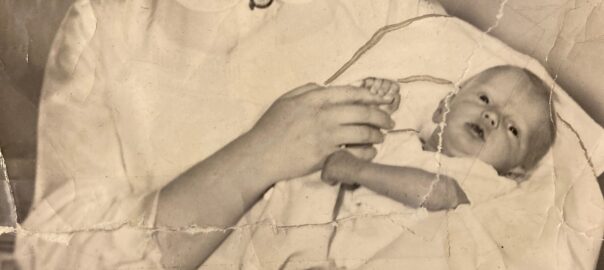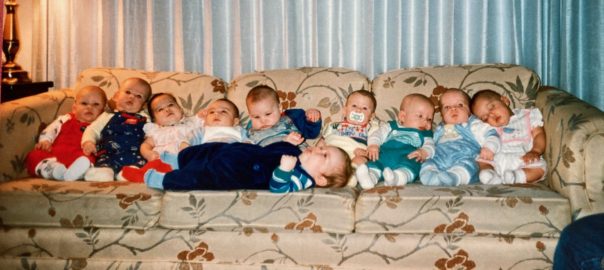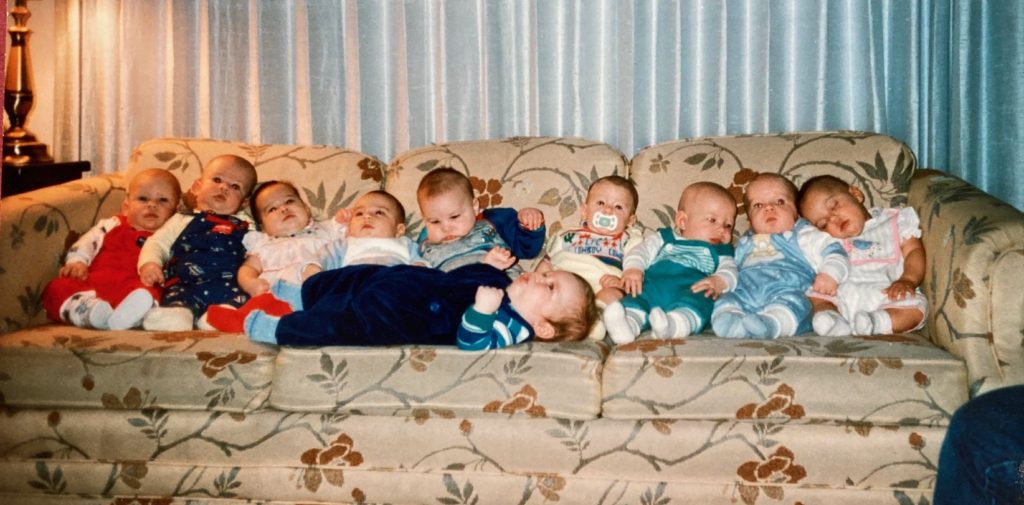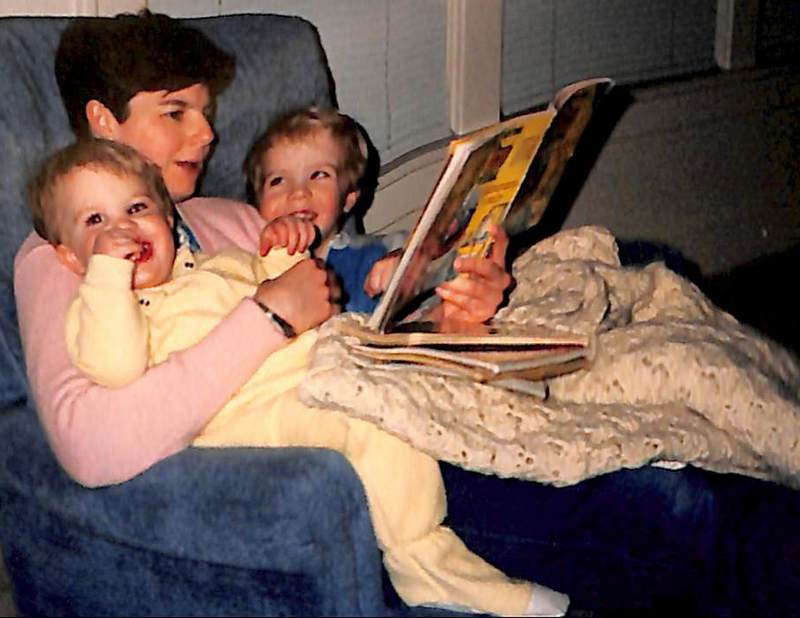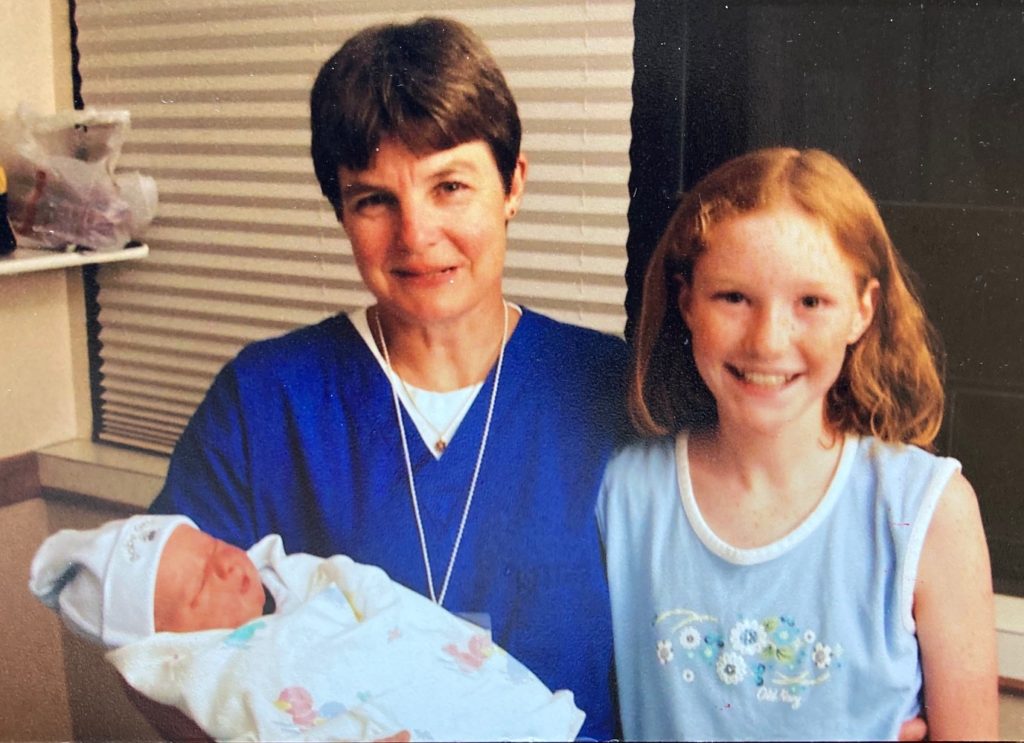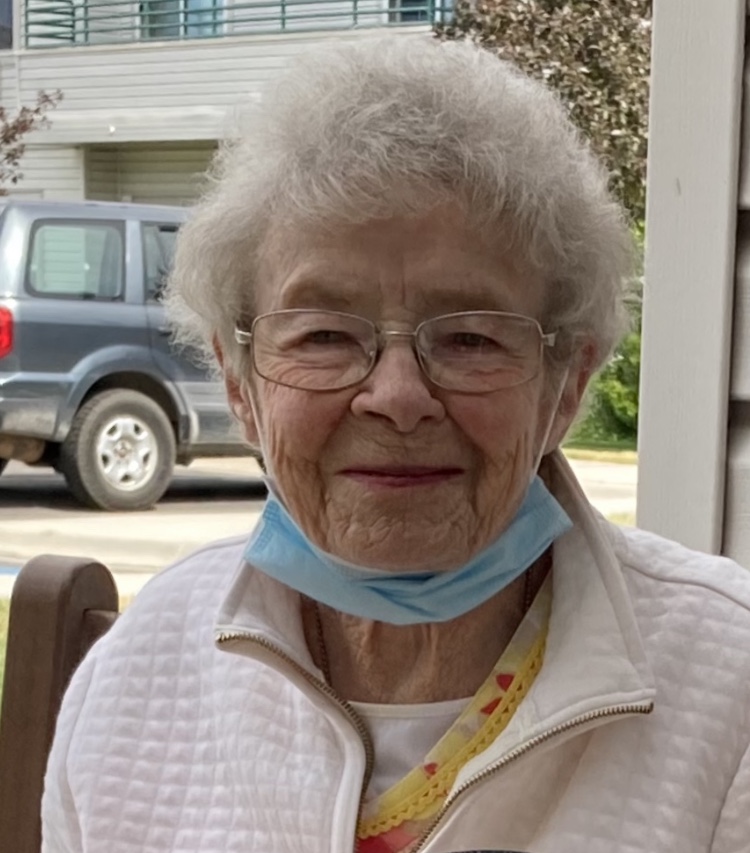I was a teenager when my mother told me about Baby Charley. He was found in the backseat of a car outside the all-boys Catholic high school in Butte, Montana in 1954. Boys rushed him to the nearby rectory, but a priest directed them to reroute to St. James Hospital, two-and-a-half blocks away.
The story was shared in newspapers around the state.
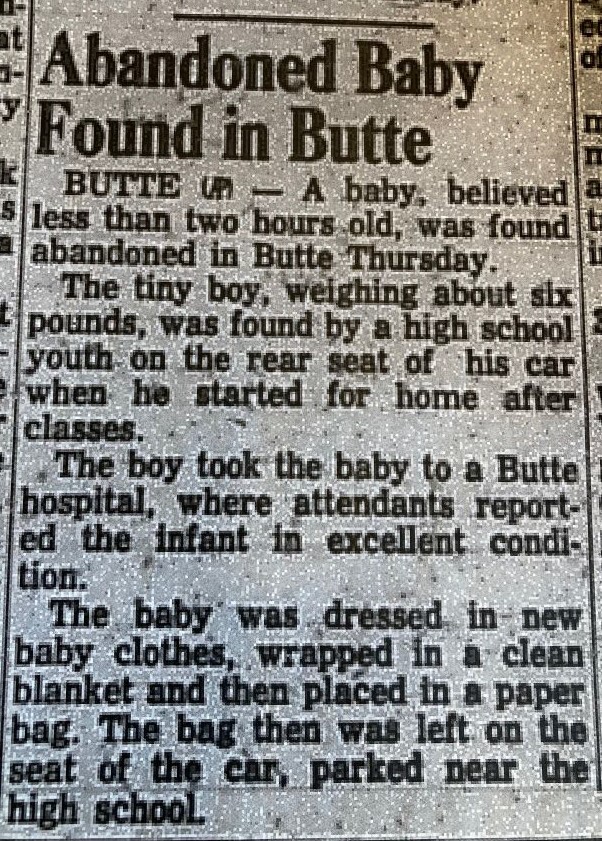
My mom, newly married and unbeknownst at the time, newly pregnant, was preparing for the oncoming nurses when she heard pounding on the alleyway door. She asked a janitor to open it. “Petrified” boys passed the baby to the janitor, who quickly handed the baby to her.
“Baby Charley” as he was named, was at St. James for about two months, according to my mom. “Everybody loved him—the priests and nuns and doctors—and lots of boys would come in and talk to him and play with him. He was well taken care of.”
She dressed him the morning he was scheduled to leave with his adoptive parents. Mom had a meeting though, so was sad she did not meet the couple when they arrived to take Baby Charley home.
When I was eight, we relocated from Missoula to Butte and moved into my mom’s cousin’s home across from St. James Hospital. The hospital was boarded up by then, replaced by a new building a few blocks away. I traipsed past the old hospital’s alleyway door thousands of times in the ensuing years, walking to and from church and school. The all-boys’ high school became mine, having transitioned to coed in the 1960’s. After learning about Baby Charley, I often imagined the boys’ angst as they rushed to the rectory, then hurried to the nearest hospital door they could find.
Mom repeated the story throughout the years, the last time in early 2020 as we visited in her independent living apartment. “He was inside a paper bag, dressed and wrapped in a blanket. He had a sugar tit in his mouth, and he had beautiful red hair…” She paused. “I hope he’s doing okay.”
“I bet he is,” I said, studying the black and white photograph featuring Baby Charley and my twenty-three-year-old mother. Clad in her white cap and starched nurse’s uniform, she’s smiling at Charley, whose tiny fingers are curled around her finger.
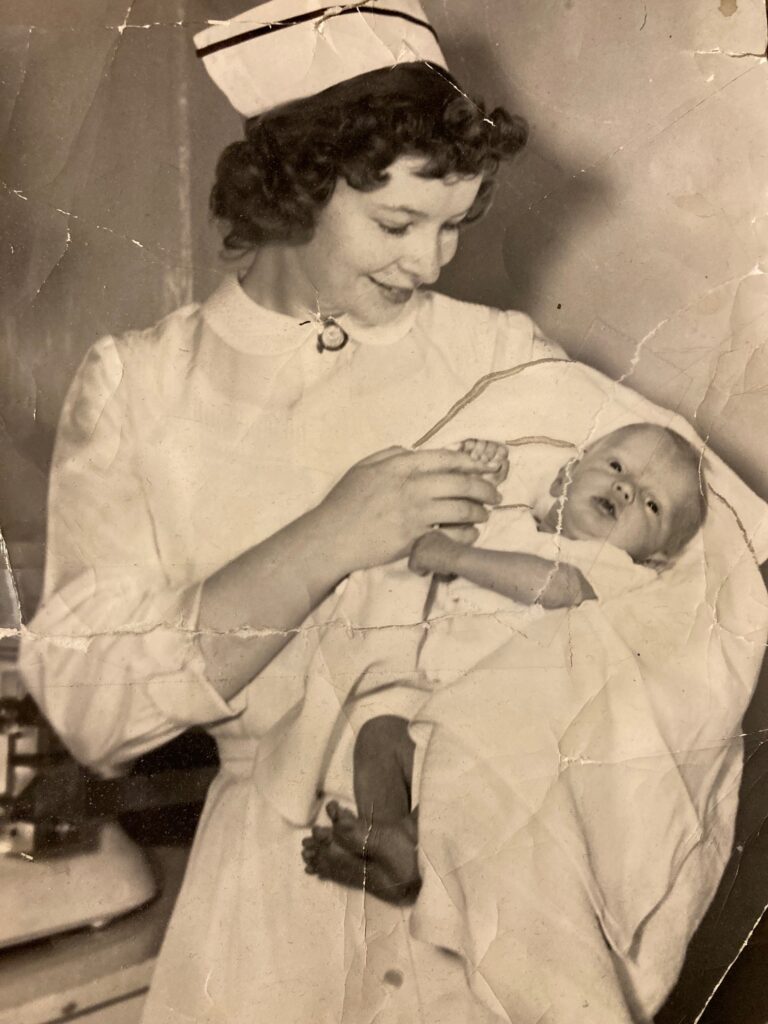
The photo, which Mom kept in her cedar chest, was taken for a follow-up news article. “Picture no. 3; 2 col Sun; bottom, pg. 4;” was scribbled across its back. But instead of publishing the photograph of Baby Charley and my mother, the newspaper published a photo of him and a nursing supervisor instead.
My mom passed away on March 18, 2023. Two days ago, I washed the linens that had cocooned her, and my sister and me, during Mom’s final hours. I also laundered a pair of plush throws. The blankets rushed memories of Mom and I snuggled under them during our fourteen weeks together after she broke her pelvis in October 2020. Swathed in comfort and warmth, we’d watch “Jeopardy” and “Wheel of Fortune.” We’d reminisce too, and sometimes when dementia took hold, she’d ask, “Where’s the baby?”
A childbirth educator and decades-long nurse, mother of eight, grandmother of fourteen and great-grandmother of twelve, Mom could have been referring to a number of babies. But during those weeks I hunkered in Assisted Living with her, she often lived in the past.
On this Mother’s Day I wonder, as I have before, if the infant Mom worried about was Baby Charley. My years of teaching Lamaze classes and working as an OB nurse, coupled with the creation of characters for my novel Perimenopausal Women with Power Tools, colored my emotions as I contemplated Baby Charley’s birth and his birth mother’s courage, strength, heartache and love.
Mom’s plush throws are washed and tucked away. I imagine gifting one blanket to Charley. If his birth mother is still alive, I imagine gifting her the other. Full circle from the young nurse who welcomed and loved Baby Charley nearly sixty-nine years ago.
